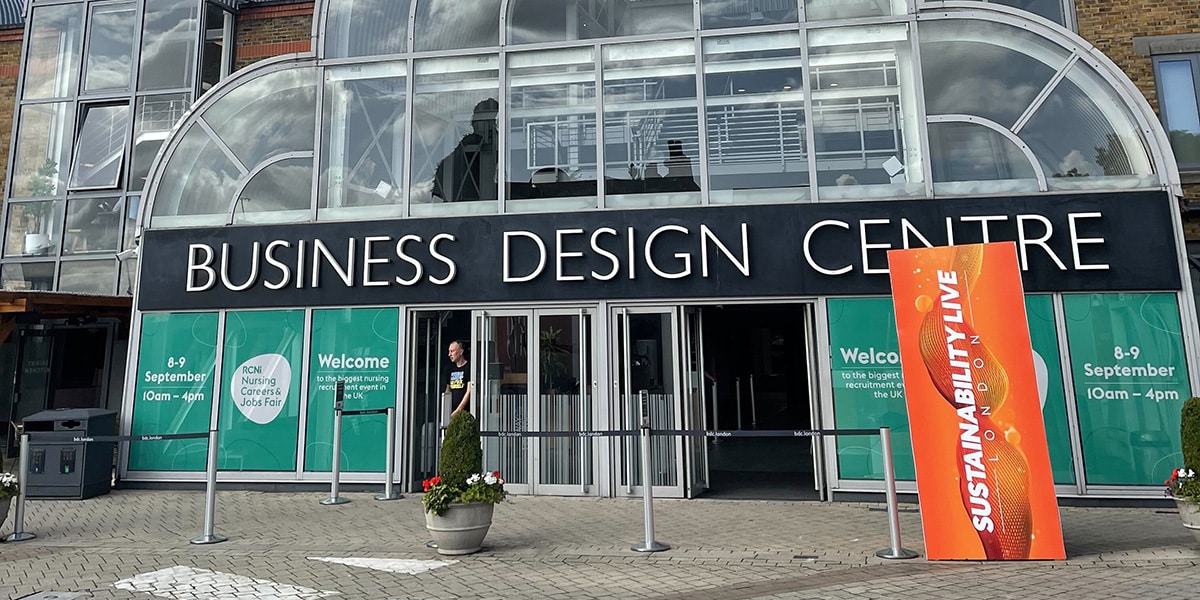Earlier this month, climate action luminaries met for another round of Sustainability LIVE London, following its inaugural launch in February. With its enormous, arched single span roof, the Business Design Centre seemed to be an ideal venue for inspiring change and echoed the notion that “the sky’s the limit” when approaching sustainability efforts.

On the first day of Sustainability LIVE London, 3Degrees was joined by executives from MSCI, Ecologi and Oxfam on the panel titled “Scope 3 and ESG: It’s All Our Problem?”.
Over 70 acclaimed corporate leaders from all over the world gathered to share insights on cleaner ways of doing business. Over the two days, speakers and panelists covered an array of topics, including DEI, net zero, ethical investment and finance, scope 3 emission reduction efforts, artificial intelligence, sustainable supply chains, and the B-Corp accreditation.
Ethical and sustainable supplier action
I helped 3Degrees kick off Day 1 of Sustainability LIVE by joining a discussion at the intersection of ESG and scope 3 emissions, along with executives from MSCI, Ecologi and Oxfam. The panel was titled, “Scope 3 and ESG: It’s All Our Problem?”.
Participants were asked to consider whether individual companies are responsible for ensuring their suppliers are operating ethically and sustainably, or whether it is the responsibility of global governments to enforce this through legislation, among others. Another topic up for debate was the assurance of entities adhering to robust ESG strategies – who is responsible for holding third parties accountable and how can transparency be enforced?
An item that sparked a lot of conversation on the panel was whether we can enforce transparency in the supply chain, EU measures that are in effect currently or will be in effect in the near future that can help ensure this. One such proposal is the Carbon Border Adjustment Mechanism (CBAM), which will require importers of certain carbon-intensive goods to pay a fee on emissions released during the good’s production process, and be able to quantify emissions associated with imported materials.
With this recent enactment in mind, it will be the responsibility of both companies and suppliers in developing countries to quantify and reduce emissions. For countries where options for reduction remain limited, an all-hands-on-deck approach could be used – including carbon project investment, onsite installation funding and other avenues.

Adam Elman, Head of Sustainability for Google in EMEA talking about how Google is using their products and services to help people be more sustainable in their day to day.
In addition to CBAM, other legislation will be coming into effect, like the Corporate Sustainability Reporting Directive (CSRD), requiring greater transparency and accountability. Technology will be playing a key part in improving transparency in the supply chain and accessing data for scope 3 reporting. This was made readily apparent by the presence of technology firms like Google, Microsoft, Interos and Supply Shift at Sustainability LIVE.
Stronger scope 3 stance
The event, and panel, made it clear that addressing scope 3 is a top priority for organisations. And in order for a business to get its arms around its entire footprint, they will need to set concrete metrics around it, and include specific options to reduce or offset their scope 3 emissions. Scope 3 emissions present a significant opportunity to innovate and make change. The key word for beginning to tackle scope 3 emissions is measurement, specifically calculating impact and data from third party supply chains through a scope 3 screening.
After understanding its scope 3 emissions, hot spots and material categories, an organisation can take additional steps to reduce or offset. Companies can perform value chain interventions, carbon insetting, and other directly funded reduction initiatives, like purchasing RECs/EACs to cover its supply chain’s scope 2 emissions. Supplier education and support programs can also go a long way when it comes to taking a strong scope 3 stance. This can include market-specific engagement and opportunities assessments, target setting, and aggregate PPAs.
The need for transparency in sustainability
A takeaway from the panel was the importance of transparency and the essential role it will play in meeting sustainability goals, and making deep, lasting reductions at scale. I am grateful for the opportunity to have joined the critical dialogue around sustainability topics, and I look forward to seeing what action we can collectively take between now and the next Sustainability LIVE London conference.
To understand your company’s scope 3 footprint and how your unique sustainability position can feed into the bigger climate action effort, please get in touch today.


